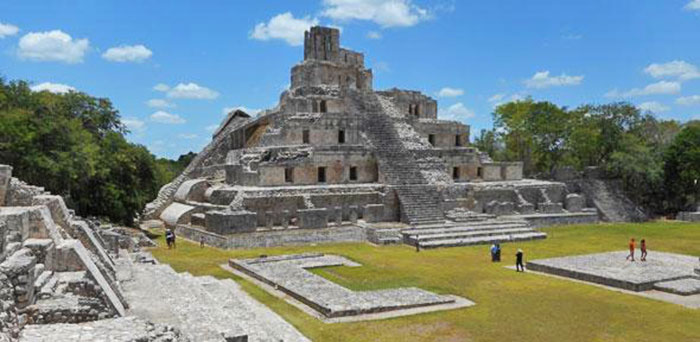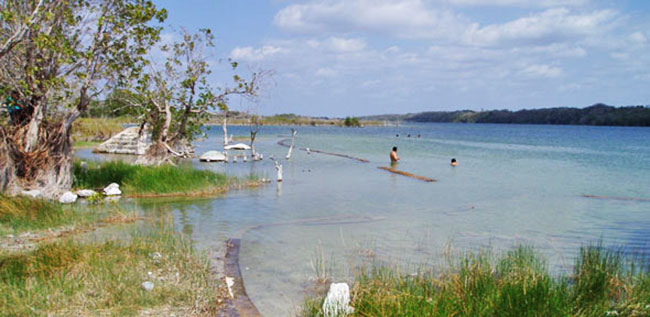|

by Ivan Petricevic
August 03,
2018
from
Ancient-Code Website

The Ancient
Maya Civilization dominated Central
and South America until 800 AD.
They built supermassive astronomically aligned temples and
incredible pyramids that rival in complexity the
Pyramids in Egypt. However, by 1000AD, the mysterious
disappeared, leaving experts wondering what happened to them.
For centuries, scholars have proposed many theories trying to
understand what happened to one of the greatest civilizations of the
American continent.
Now, researchers say they've solved the mystery behind why the
ancient Maya disappeared without a trace.
According to experts, the Maya civilization collapsed because of
extreme, and severe droughts.

The Pyramid of Chichen Itza.
(Shutterstock)
Based on
these measurements, the researchers
found that annual precipitation decreased between 41% and 54%
relative to today during the period of the Maya civilization's
collapse, with periods of up to 70% rainfall reduction during peak
drought conditions, and that relative humidity declined by 2% to 7%
relative to today.
The results (Quantification
of Drought during the Collapse of the classic Maya Civilization)
are reported in the journal Science.
By the time the Spanish arrived in the 16th century,
jungle vines were flourishing on abandoned massive ancient Pyramid
cities built by the Maya.
In the past, scholars have suggested that the ancient Maya may have
collapsed due to,
However, scientists from
the universities of Cambridge and Florida have found strong evidence
that an extended period of drought caused devastating effects on
this vast civilization.
To come to their conclusion, researchers (like
David A. Hodell) studied water
samples in Lake Chichancanab where the Maya were based.

Lake Chichancanab, the site of the study.
Chichancanab means “Little Sea” in Yucatec Maya,
reflecting its relatively salty water
composed dominantly of calcium and sulfate.
(Credit: Mark Brenner)
Experts measured isotopes
of water in
gypsum, a mineral that forms in
lakes during times of drought.
As gypsum is formed, water molecules adhere to its crystalline
structure, and this water records the different isotopes that were
present in the ancient lake water at the time of its formation.
"The role of climate
change in the collapse of Classic Maya civilization is somewhat
controversial, partly because previous records are limited to
qualitative reconstructions, for example, weather conditions
were wetter or drier,"
said Nick Evans, a Ph.D.
student in Cambridge's Department of Earth Sciences and the
paper's first author.
"Our study represents
a substantial advance as it provides statistically robust
estimates of rainfall and humidity levels during the Maya
downfall."
|




